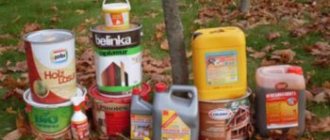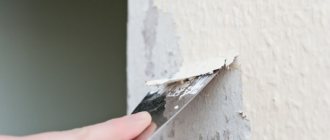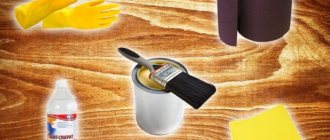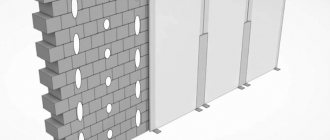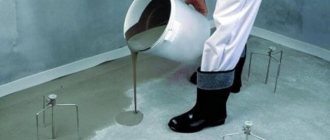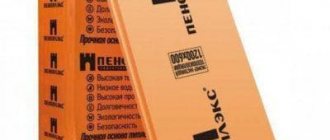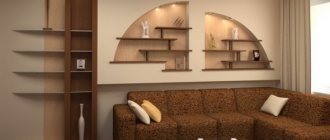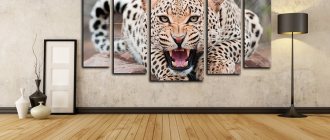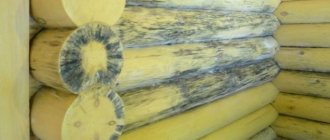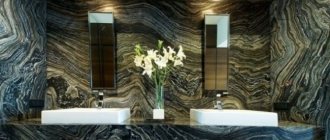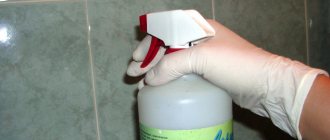Slate coloring technology
The choice of paint and its color is a responsible process. But, unfortunately, even the most expensive and high-quality enamel cannot guarantee a reliable decorative and protective coating on slate. If you do not follow the painting technology, then the pigmented film will almost certainly behave unpredictably. For example, it will begin to crack, swell or crumble much earlier than the end of its service life (possibly even a few days after painting). Therefore, you also need to know how to paint slate correctly!
The process of painting slate is carried out in several stages:
The slate surface to be painted must be cleaned of dust, dirt, fungal and plant deposits, and unstable (or incompatible with the chosen paint) coatings.
Cleaning can be done in two ways: dry mechanical (manual or mechanized) and using pressurized water jets. Sometimes these methods are combined and performed alternately.
For manual mechanical cleaning, wire brushes are used to scrape off efflorescence, dirt, moss and lichens. The work requires considerable effort and accuracy, and the cleaning speed is very low. You can clean slate faster and better with the help of tools. To do this, put an attachment on a grinder or drill, which is essentially the same brush for metal. When the tool is turned on, it begins to rotate, cleaning off surface defects of the slate.
The second cleaning method is to wash the slate with high-pressure water jets, which are created by car mini-washes (Wagner, Karcher, etc.). In this case, the created pressure should be within 100-250 atmospheres. Mini washers that release water at a lower pressure will not be able to remove contaminants, while higher pressure mechanisms will destroy not only the defects, but also the slate itself.
To impregnate the top layer of slate, special compounds are used - primers. They are selected in accordance with the instructions for using the specific coloring composition. For example, organosilicon paint Ko-slate is combined with silicone primer KO-011S. However, organosilicon paints, as well as “Liquid Plastic” compositions and alkyd enamels can be applied without prior priming. Acrylic paints, on the contrary, require the use of a primer. These can be either special compositions (for example, Dupa-grund for Alpina DACHFARBE) or paint diluted according to the instructions. To obtain an impregnating primer for Alpina DACHFARBE acrylic paint, it is enough to dilute it with water to 10% of the volume.
The primer is applied to the slate in 1-2 layers using a brush, roller or spray gun.
Direct painting is done over the dried primer. As a rule, it is enough to apply 2 layers of paint, the first of which will be the base, and the second – the finishing. The base layer is the main one; it must carefully cover the entire surface of the asbestos cement, including the ends, corners, joints, ridge and corner parts. After the first layer has dried, paint it again. The task of the second (finishing) layer is to ensure that the painted slate receives a bright, uniform color, without streaks.
Treatment is carried out with a brush, roller or spray.
This simple technology will give slate color and high decorativeness, comparable to the beauty of tiles, bitumen or metal roofing. In addition, painting (with periodic renewal of paint) will provide reliable protection for the roof from environmental influences and will increase its service life for decades.
High pressure washing
The most common and high-quality method of washing a roof is using a high-pressure water jet. Cleaning a slate roof with a Karcher is an excellent method to quickly and effectively deal with dirt without resorting to labor-intensive mechanical methods or expensive treatment with chemicals.
The water pressure in the device should not be 250 atm: an ordinary garage Karcher may not be able to cope with the task, so renting equipment would be a good solution.
Washing is carried out in the direction from top to bottom: from the ridge to the cornice. This precaution will allow you to avoid the unpleasant consequences of washing in the form of moisture accumulation under the roof. After cleaning half of the slope, you need to wait until the treated area dries. Then go to it and complete the cleaning.
No. 3. Types of paints for slate
Great, we've sorted out the material.
Now is the time to move on to how to choose paint for slate, what to look for and what to consider before purchasing? By and large, nothing complicated awaits you in this process, since the main things you will have to focus on are the type of paint, depending on the main active ingredient, as well as the manufacturer. It is these two components that are decisive, and therefore we will dwell on them in more detail.
So, first of all, as we have already found out, slate paints differ in the main active ingredient and are divided into four types:
Acrylic. Also known as water-based paints, they are widely used and are often used for painting slate. Mainly also because they endow it with positive properties, such as increasing the sliding characteristics of the surface. The latter, for example, is extremely practical in the situation with precipitation in general, since it flows off the roof much more easily without lingering there and without having a negative impact. Such protection from moisture simultaneously protects the slate from destruction, significantly extending its service life. The color palette of acrylic paints is varied, and you will surely find an option that suits you and your home. They also dry quite quickly.
Enamel. One of the best options for increasing the strength of slate and giving it reliable protection from atmospheric influences are paints of this type. One of the advantages of enamel paints is the formation of a coating that is similar in appearance to enamel, which is characterized by additional durability. If you don't want to repaint your slate for a fresh color anytime soon (which can vary depending on a variety of factors), then enamel paint is a great option because it contains pigments that protect it from fading.
Liquid plastic. In most cases, they are synthetic paints based on various polymers or bitumen, although some also claim that liquid plastic refers to acrylic construction paints. One way or another, these are modern paints, the advantages of which are good adhesion to the slate surface, durability and reliability. Another advantage is that they are quite affordable, but they also have disadvantages. Since these are synthetics, the composition of such paints is often replete with substances harmful to health, and moisture protection, in comparison with acrylic paints, may not be as reliable.
Rubber. The last type of paint, which is considered the most popular for use when painting slate, as it has a large number of advantages, eliminating the disadvantages of the previous types. Here you also have high elasticity, which allows the paint to stretch without damage, which is especially practical when microcracks appear on slate. However, it will take a lot of time before they appear, since rubber-based paints protect it well from all kinds of irritants. Separately, it is worth noting that it does not contain substances harmful to human health, and also has high fire safety and does not succumb to combustion.
Of course, to improve the performance characteristics of slate, many recommend using rubber paints, applying them in at least two layers. However, the final choice will still depend on your needs and budget. So, taking into account all the information received above, you can certainly choose the most suitable option for you without much difficulty.
Slate paints from manufacturers in the former CIS countries
If you will be painting slate, then you can choose products manufactured under the Polifan brand. This Russian paint is used for application to slate, brick and concrete. The main advantages are:
- wear resistance;
- water resistance;
- color fastness;
- durability.
Ukrainian paint "Akrylama-Slate" is used exclusively for slate and is a viscous acrylic liquid on a water-dispersion basis. The base for Belgorod paint “Unisal” is acrylic elements on a water-dispersion basis. You can achieve the desired color by adding coloring pigments.
The coating is highly resistant to ultraviolet radiation and precipitation. The Moscow paint “Butanite” contains polymer substances, to which mineral-silicon ingredients are added during the production process. The main feature of the composition is frost resistance.
How to paint slate
First of all, let’s figure out how to paint the slate on the roof. You can often hear that painting slate and other asbestos-cement materials is extremely short-lived. Skeptics claim that the paint layer begins to crumble after the first winter, so it is better not to bother with this procedure at all.
In fact, everything depends on the choice of paintwork and compliance with technological requirements. Even a wooden door, if it is not painted correctly, will lose its attractiveness in a year.
Slate paint Triora
Today, deciding what to paint a slate roof with is not difficult. Special coloring compositions for coating asbestos-cement materials are produced by both foreign and domestic manufacturers. They are made on a silicone or acrylic base, which ensures high reliability of the coating.
Among the most common paint coatings on the market for these purposes, the following brands can be distinguished:
Triora is a domestic slate paint made on an acrylic base. This composition has excellent performance properties, including moisture resistance and light fastness. The paint is applied to the primed surface in two layers.
Initially, the composition is white, however, with the help of tints, you can give the coating almost any color and shade. Another advantage of this paint is its low price.
- KO-slate - this composition includes a mixture of silicone-based dyes and fillers. It has good adhesion, excellent decorative properties and resistance to mechanical stress.
- Kilpi from Tikkurila is a slate roof paint made with an acrylate modified dispersion. This is quite an expensive coating, but the high cost is justified by the high quality. The coating does not lose its elasticity even at very low ambient temperatures.
When choosing paint, keep in mind that they differ not only in properties and composition, but also in consumption. Therefore, low cost does not mean savings.
Slate paint – Kilpi
It must be said that all these types of paints are intended for application exclusively to asbestos-cement surfaces.
However, there are often all kinds of metal structures on the roof, these are:
- Roof ridges;
- Visors;
- Chimneys;
- Fencing, etc.
Therefore, in addition to paint for slate, you should prepare compositions for metal surfaces in advance. For example, fire-retardant metal paints Polistil are suitable for chimneys.
Paint for metal surfaces – Zinga
Zinga electrically conductive paint can protect skates and other metal elements from corrosion. Moreover, it provides not only passive (barrier) protection, like ordinary paint, but also active (cathodic) protection.
Coloring tasks
Flat and corrugated slate is a fairly common roofing material, the gray color of which becomes boring to homeowners over time. Experienced craftsmen see no reason to refuse installation if the only reason is inexpressive color, because slate paint can easily solve this problem. It is worth painting a slate roof because:
- The paint layer is an additional binder for asbestos dust, which is considered harmful to human health. With its help, you can make slate a safer material for finishing roofs and facades.
- When applied, slate paint fills microcracks and pores on the slate surface, enhancing the waterproofing of roof coverings.
- Painting slate solves the problem of roof slopes becoming overgrown with moss, which faces everyone who decides to have a slate roof. With its help, you can eliminate the fungus and pests that live on the porous surface of this material.
The difference between painted and unpainted slate
Variety of colors of painted slate - Painted slate looks much more impressive than regular gray. With the help of painting, you can make the roof of any shade that is in harmony with the color of the house trim. Moreover, slate paint makes this material more glossy and shiny.
Important! The best time to give a roof that has been covered with flat or corrugated slate the desired color is before installation work begins. However, this happens extremely rarely in real life. More often, homeowners think about how to improve or update their roof 5-7 years after construction.
The most popular paint brands
The market for paints for construction purposes is replete with brand names from the most famous manufacturers. However, which one is best for staining slate? Today, the following manufacturers are in high demand:
- Dahbeshikhtund. Paint from a German campaign, characterized by excellent performance properties. Of course, its cost is much higher than its domestic counterparts, but its quality makes it a leader. It has high adhesive properties, good strength, and long-term operation. It is recommended to use it for natural type tiles and slate.
- Polyfarb. A Polish-made product made on a dispersion basis. One of the features is the ability to dry quickly, which significantly speeds up the work process. Also, thanks to coloring, resistance to moisture and ultraviolet radiation increases.
- Aqua. The creators of the paint are the joint work of Finland and Sweden. It dissolves easily in water. A distinctive feature is resistance to alkaline environments. In practice, Aqua is used not only for painting slate surfaces, but also for concrete bases.
Why do people paint old slate?
Made from a mixture of asbestos and cement, slate has a porous structure in which mosses, lichens and other plant parasites multiply. Over time, the surface becomes covered with dust, soot from the chimney and other contaminants that worsen its decorative and performance qualities. Moreover, the listed processes occur with both wavy and flat material.
Painting slate allows you to get rid of these negative phenomena. People paint old slate for the following reasons:
- the release of fine asbestos particles harmful to health into the environment is reduced;
- waterproofing qualities are improved;
- resistance to temperature fluctuations in the external environment increases;
- the operating period is significantly increased;
- the development of pathogenic microflora is prevented;
- the painted surface has high decorative properties.
A painted roof harmonizes well with the color of the walls.
Of course, it is simpler and easier to paint at the stage of installing the roofing. In this case, the slate can be painted on the surface of the ground and then installed in its place.
However, it often happens that owners of private houses think about performing this procedure after several years of operation, when the moss-green surface absorbs moisture and creates an increased load on the rafter system. At the same time, green paint is very popular.
How to paint slate with your own hands - step-by-step diagram
Step 1: Check the surface
For high-quality painting, it is necessary to carefully prepare the slate surface. This process is carried out in several stages. If this is an old coating that has been in use for many years, then you should start with a “meticulous” inspection
Pay special attention to the coating - you may find moss on it. It will need to be removed before painting.
Step 2: Prepare the area for work
Some experts recommend clearing vegetation from your roof using a drill and brush. The main thing with this approach is not to accidentally damage the sheets themselves. Once you have dealt with the moss, you need to check if there are any breaks or cracks on your roof. If they do exist, we seal them with a mixture that can be made from PVA (diluted with water), cement and asbestos. We have resolved the issue with cracks and defects - we begin to remove debris and dust. Only an absolutely clean surface will allow you to achieve the desired result when painting.
Step 3: Wash the coating surface
In order to wash the slate surface, we use household brushes and water. Just do not forget that after such water procedures the slate must dry thoroughly. Don’t try to do everything quickly and “just how.” Better slowly, but efficiently!
Step 4: Working with Primer
Further work with the coating involves a primer. We treat the slate coating with a special compound in order to increase the “adhesion” of the materials. This process will also help to achieve the necessary contact between the slate paint and the top coat. By the way, asbestos cement roofing absorbs any materials quite well, and if you treat the surface poorly, you risk encountering stains after painting that will stand out strongly.
Step 5: Paint the roof
If you do everything correctly, then it is better to start painting in cloudy rather than sunny weather, and the air temperature should be about plus 15 degrees. At temperatures above 35 and below 0, you will simply face the impossibility of your mission. However, some manufacturers assure that their brainchild can be used at fairly low temperatures.
There are two methods of applying paint - manually or using a sprayer. You have the right to choose as you wish. Either one or the second option will be effective. Just keep in mind that the paint consumption indicated by the manufacturer often does not correspond to reality. So, you have applied the first layer - now you need to let it dry thoroughly. Your paint package will indicate how long to wait before applying the second coat. But keep in mind that it is better to give the roof more time than indicated by the manufacturer (optimal conditions are indicated on the container).
Step 6: Finish painting
If you have used a high-quality primer, then a second coat will be enough to get an even color and coverage. If you still have doubts or the result does not satisfy you, it is better to resort to a third attempt. The final layer is considered to be the one after which you get a uniform color coating. And do not forget that the paint will completely harden only after a few days.
Preparatory work before painting
- Assess the amount of work, the presence of islands of dust, dirt in the recesses, moss and droppings;
- The main work on slate cleaning should be carried out using a hydraulic remote control (Kärcher type);
- Clean stubborn dirt or droppings with a wire brush by hand or using a grinder with an attachment.
Cleaning slate from moss and dirt before painting
The video shows how easy it is to remove all dirt from old slate before painting.
Recommendations for painting flat slate
To achieve high-quality painting, it is important to know some features in slate finishing. For this procedure, it is better to choose a cloudy, not hot day: the temperature should not rise above +18 degrees
This will allow the paint to adhere well and dry in an optimal manner. Sometimes some paints indicate the ability to work at zero temperature, but it is better not to take such a risk.
Painting flat slate can be done in several ways. The simplest of them is to use a construction sprayer. As a rule, the instructions for the sprayer contain incorrect information regarding the volume of material consumption per 1 m2: practice shows that it is an order of magnitude higher. After applying the first layer, you need to give enough time for it to dry thoroughly. This time may differ for different formulations: the exact information is indicated on the packaging.
In any case, it is better to make the pause between applying individual paint layers longer than recommended by the instructions. The fact is that if you apply the next layer on top of the previous one that has not completely dried, in the future this may cause peeling of the painted slate. This is due to the fact that the liquid sealed under the new layer does not have the opportunity to evaporate, which is why swelling and peeling occur. As for the deadlines indicated on the packaging, they assume the ideal fulfillment of all conditions, which in practice usually causes problems. Also, one should not discount the usual marketing ploy when a manufacturer slightly overstates the characteristics of its products. Sometimes it is necessary to make holes in slate sheets. Knowing how to drill flat slate, you can do it quickly and easily.
Why do cracks appear on slate?
The reason for the appearance of cracks in slate is trivial - moisture penetrates the sheet, freezes when the temperature drops, and increases in volume, thereby deforming the surface.
The procedures described below, regardless of the type of material applied, essentially pursue one goal - the formation of a protective and decorative coating that isolates the slate from the aggressive influence of the external environment.
Painting slate - what, how and why?
Let’s take as a starting point that you will have to personally tidy up the roof of the house, which means that you will have to become thoroughly familiar with such a rather important process as painting slate with your own hands – from “a” to “z”. If the slate on the roof of your house is in good condition, without cracks or damage, durable and does not allow water to pass through even in heavy rain, then you can begin work. But in order to put your roof in order for the next ten years and be confident in the final result of your work, you will still have to make considerable efforts. To do this, you will need to at least check, and if necessary, update the entire roof or part of it.
If your coating is completely leaky, then no amount of painting will help such a roof covered with cracks. Here you need to safely buy new slate, which will be the color you want. We will talk about work that concerns such a process as painting slate on a roof, but for the material that has been in use for more than one year. So, after one decade, or maybe more, your roof doesn’t look very good, and let’s say it’s completely unpresentable. Which means you need to get to work. As experts say, painting old slate is a completely doable job, but it is labor-intensive and not as easy as it seems at first glance. So, you will need, firstly, to find out about the real condition of the roof, and secondly, to decide on paint and varnish materials.
In order to avoid problems in the future, you need to choose the right material. And don’t listen to those who confidently say that after painting such a product, the paint layer will crack and crumble literally after the first cold weather. There are many examples when, after painting (with the right materials), painted slate pleased its owners with its appearance for many years. So we make it a rule to choose paint accurately and comply with technological requirements when working. In addition, you should consider what kind of slate you have - wavy or flat. It depends on what is better to paint - with a paint roller or a brush. If you already use the material (installed on the roof), then you will have to stock up not only with patience, but also with a ladder (preferably very stable, since the work will not take an hour or two). If you are going to paint the product on land, then prepare a special elevation for convenience (so that the product does not crack or get dirty).
Work methodology: reviews
If you decide to update your roof, it is recommended to read reviews about painting slate. Consumers say that it is best to use a spray bottle or a wide brush to apply antiseptic. It is important for the master to use protective equipment:
- glasses;
- gloves;
- respirator.
When choosing a primer, it is important to pay attention to formulations that contain ingredients that protect the surface from the formation of moss and mold. According to buyers, it is better to apply the primer in several layers. When painting slate yourself, it is best to purchase a primer from the same manufacturer as the decorative material that will be used at the final stage of upgrading the roof.
It is best to start work early in the morning when the weather is not too hot. The ideal humidity level for this is considered to be between 40 and 60%. This combination with a temperature of 20 °C is quite rare, so it is recommended to follow the instructions.
It is important to pay attention to the processing of ends, hard-to-reach areas and corners. Approximately 60% of the total paint volume will be used for the base coat.
Slate processing process
After we have cleaned the work surface of excess dirt, we can begin processing the slate itself. This process includes the application of an antiseptic and hydrophobization. Antimicrobial substances will help kill parasites that live in microcracks in the material. Plus, it will prevent them from multiplying and spreading. You can do the treatment with a regular brush, but it will take longer and require a lot of effort. It is best to use a special sprayer. When antiparasitic treatment, be sure to wear gloves on your hands and glasses or a respirator on your face to avoid poisoning.
The slate surface becomes porous over time due to increased humidity, which leads to early damage and destruction. In order to improve the quality of the cover, hydrophobation should be carried out. These measures have a positive effect on the service life of the roof. Painting flat slate or any other type will help restore a neat appearance. It is best to carry out the procedure immediately after laying the material, but many developers do not think about this right away. They consider this option only in situations where the products have already lost their aesthetics. In the next section we will consider in detail this important and final stage of work.
Materials and tools for painting slate
To work you will need tools:
- a metal brush or a light grinder with a round metal brush in the form of an attachment, for removing dirt on old slate;
- a spray gun for large volumes, or a wide hard brush for small volumes of work;
- container for mixing paint;
- a ladder or stepladder of sufficient height;
- hydraulic remote control for wet processing of slate;
- safety devices when working on the roof.
For work you will need consumables:
- primer for preliminary application to the slate surface;
- paint, desired color, quality and price;
- liquids corresponding to the type of paint for washing the spray gun nozzle and thinning the paint;
- Possibly additives to the paint to give it the desired color.
Maybe I didn’t remember something from the tools, maybe you are using some special paint for slate. Please advise.
No. 2. Advantages and disadvantages of slate
We have already understood that painting slate generally has a positive effect on its properties. However, since we said that this roofing material has a number of advantages over some analogues, it would not be amiss to list them. And among the main ones it is worth highlighting the following:
- high strength due to the successful combination of asbestos with cement;
- does not rust, does not conduct electricity;
- resists moisture well and does not heat up as much in the sun (like metal);
- can last much longer;
- much more affordable price compared to analogues.
Of course, it also has a number of other positive features, such as good sound insulation or the absence of toxic emissions during combustion, but these are no longer so important features for many consumers. Frankly speaking, slate also has its drawbacks, which are worth mentioning for the sake of objectivity. Fortunately, there are not many of them, and they are expressed in rather heavy weight (one sheet of slate weighs about 18 kg), and also in the fact that despite its high strength, slate can be extremely fragile. It will not be difficult to damage it during careless transportation or installation.
Why restore slate?
Many will say: “Why restore an old slate roof if you can buy new slate and not worry about it?” Of course, you can do this, but the most important thing would be to replace it with metal tiles or other roofing material. But there are situations when there is simply no money for this purchase, and you don’t want to live in a house with water dripping on your head. In addition, it often happens that part of the slate roof is in good condition, and only some sheets are damaged. It’s easier to restore them than to tighten new ones.
Types of paints for slate
Painting slate with the wrong material is not advisable. The coating will swell and begin to bubble within the first year. Asbestos fibers are not compatible with all types of paints. The following types of products for staining slate are distinguished:
Water-based acrylic paints
Water-dispersion paints are widely used, are easy to use and significantly improve the performance of slate roofing. An extensive range of products with varying degrees of matte finish and a wide range of colors will help you choose a coating to suit every taste. The functions of the solvent here are performed by water.
Distinctive characteristics:
- easy to apply, do not smear, dry quickly;
- fireproof, environmentally friendly, characterized by the absence of a pungent odor;
- create a reliable moisture-proof coating;
- increase resistance to temperature changes;
- no solvent required;
- The service life of acrylic coating is about 5 years.
Water-based acrylic compositions also include paint, which is called “rubber”. The components remain the same, only the structure of the material is very thick and similar to mastic. This composition applied to the roof forms an elastic and very flexible film. This universal material is used not only for painting roofs, but also for covering swimming pools, showers, treadmills, and various anti-slip structures.
Acrylic paints based on organic solvents
A type of acrylic paint, however, not water, but special organic solvents are used as a thinner. I usually use white spirit. This type of coating differs from water-dispersion coating by increased strength, elasticity and higher hydrophobic properties. This paint does not fade for a long time and retains its original color.
However, when painting, it is worth considering that the paint has a pungent odor, which gradually dissipates, and the drying time of one layer is about 12 hours.
Organosilicon (silicone) paints
Silicone paints are a composition of dyes and various additives in a silicone binder. This roof covering is considered one of the most reliable and durable, has increased elasticity and water resistance. The enamel permeates the top layer of the material, actually providing an additional protective coating to the roof, filling cracks up to 0.2 cm. It provides the roof with a deep, long-lasting color that does not fade or fade in the sun.
Properties of silicone paints:
- fire safety, no pungent odor;
- increased strength and elasticity;
- high frost resistance and hydrophobicity;
- dirt-repellent properties, enamel also prevents the proliferation of mosses and lichens in the pores of the material;
- does not require surface priming;
- service life is about 10-15 years.
Alkyd slate paints
Alkyd enamels for slate contain alkyd resins in addition to pigments and additives. This coating has good adhesion to the roofing material and a short drying time (about 1 hour). The paint forms a durable elastic film that is resistant to external influences and cracking. The enamel has increased moisture resistance, frost resistance and protects the slate from contamination. Another positive quality is that it does not require priming the surface before application. The durability of the coating is about 5 years.
Polymer paints “Liquid plastic”
Polymer-based enamel contains components such as polyurethane, vinyl or polystyrene, due to which, after drying, it forms a thin but durable plastic layer on the roofing material. “Liquid plastic” is hydroscopic and completely eliminates the penetration of not only moisture, but also mold or mildew. This paint is very wear-resistant and reliable, the color does not fade or fade under the influence of ultraviolet radiation for a long time.
Properties of “liquid plastic”:
- hydroscopic and resistant to sub-zero temperatures (allows application at temperatures down to -10°C);
- fire safety and environmental friendliness;
- quick drying;
- does not require special preparation of the surface with soil;
- The durability of such coating is up to 15 years.
The price of such compositions is quite high, but the characteristics and service life of the coating justify the costs.

